The Australian contingent at the SeaWeb Seafood Summit held in Seattle in June was relatively small, but provided representation for a broad cross-section of the Australian seafood sector. Here’s how some of Australia’s participants saw the event:
Government
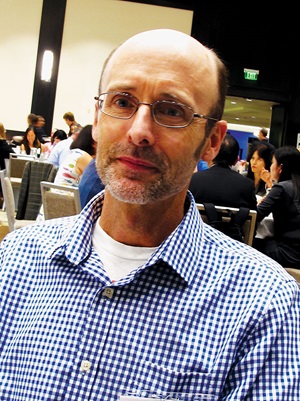
Nick Rayns: executive manager, fisheries, Australian Fisheries Management Authority (AFMA)
Why did you attend?
I am always curious to know what is happening in the world that may impact on future fisheries regulation and the Australian fishing industry. ‘Regulation’ comes in many forms and governments are not the only ones who apply them – the private sector has an increasing role.
What were the top issues for you?
- The strategy of environmental NGOs to use pre-agreed United Nations/Food and Agriculture Organization/International Labour Organization codes as a means of operationalising fishery certification schemes and related standards such as the Global Sustainable Seafood Index. This in turn will control market access in many, but not all, cases.
- The changing definition of a sustainable fishery – broadening from fish stocks, to ecosystem to socioeconomic issues including human and animal welfare.
What are the implications for your organisation?
AFMA is in a pretty good position, especially because of our fishery independent monitoring through fishery independent surveys, the observer program, vessel monitoring system and electronic monitoring with cameras and other sensors.
The major issue ahead is government coordination across AFMA, the Australian Department of Agriculture and Water Resources, Australian Maritime Safety Authority, the Fair Work Commission and the states/NT who have collective responsibility for fisheries, marine safety, human welfare and animal welfare. Industry and the private sector will demand this coordination within the next three years to meet market requirements.
Wild fisheries harvesting and seafood supplier
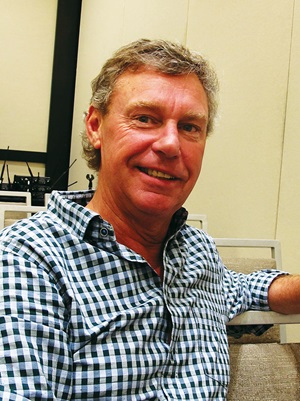
Martin Exel: general manager environment and policy, Austral Fisheries
Why did you attend?
To evaluate the priority issues for seafood in the conservation community and broader global seafood businesses, and how we can adapt our approach at Austral to meet those future needs.
What were the top issues for you?
- Environmental sustainability is becoming an absolute bottom line for seafood sales, in the same way as food safety and quality standards did. If our seafood doesn’t meet the requirements of sustainable seafood, it will not get sold.
- The increasing societal pressure in the US market to demonstrate that our seafood is harvested acceptably in relation to crewing and labour-market issues.
- Climate change remains the number one identified issue of concern with seafood production, both in aquaculture and wild-capture fisheries.
What are the implications for your organisation?
- Austral will continue to promote Australian seafood as sustainable and healthy, and work with other industries, scientists, managers and conservation groups to ensure our products are genuinely sustainably sourced and recognised as such.
- We have been working on mechanisms to demonstrate our crewing arrangements meet any reasonable standards that may be imposed, and will stay in close touch with the joint working group from the UK’s Seafish authority, and the National Fisheries Institute in the US (among others) who are testing an international ‘baseline standard’ for labour practices.
- We are continuing to work and highlight the need to do better globally at reducing our carbon emissions.
Wild fisheries harvesting and seafood supplier
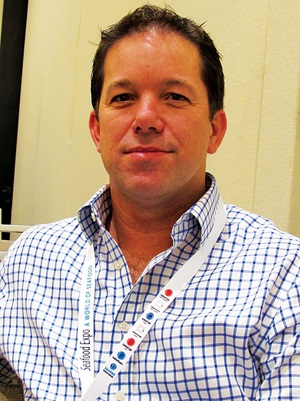
Malcolm McNeill: managing director, Australian Longline
Why did you attend?
To better understand the environmental and social issues at a global scale, that we (Australian Longline and the fishing industry in general) need to be mindful of when paving our way forward both strategically and in our day-to-day operations. We can then transfer this into voluntary improvement of environmental and socially responsible fishing practices.
What were the top issues for you?
- An increasing focus on ensuring that seafood is sustainable and takes into account the social aspects of delivering seafood to the consumer’s plate. The use of slave and child labour in the global seafood industry is being increasingly highlighted and consumers are in turn demanding increased transparency.
- ’Stuff’ in the ocean that’s not meant to be there, such as lost fishing gear that has the potential to ghost fish, but also the increase of plastics, specifically microfibres and micro plastics that have made it into the waterways in the world.
What are the implications for your organisation?
Steps to be taken from an Australian Longline perspective to address these issues include:
- Working with organisations such as the UK’s Seafish to ensure we are using responsible employment practices that also monitor the wellbeing of our crew.
- Continuing to investigate ways to minimise gear loss through working with innovative fishing gear suppliers and improving our own means of recovering lost gear.
- In conjunction with other Australian seafood companies, promoting ‘Product of Australia’ seafood as being clean, green, sustainable and delicious.
Research
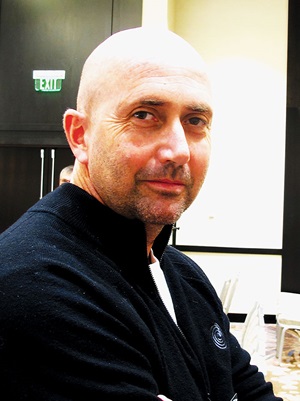 Crispian Ashby
Crispian AshbyPrograms manager, FRDC
Why did you attend?
Following the 2012 SeaWeb Seafood Summit, I was interested to see how things have changed and moved forward. The Australian industry and managers are interested in sustainability reporting and what has been occurring in this space to help progress efforts here in Australia regarding reporting standards for fisheries.
What were the top issues for you?
The major take-home message was the shift from environmental to social/societal sustainability such as labour conditions etc. The pendulum appears to be shifting. It was refreshing to see that retailers and wholesalers were on the front foot a little more with regard to sustainability. There was also a change in language, more to do with meeting protein and food needs for future generations.
What are the implications for your organisation?
Given the shift and apparent changing focus to social elements it would be good to get on the front foot with regard how these can be measured and reported. Another message is to get ahead of the game and own the space rather than have others create the space (and several versions of it) that the industry both harvest and post-harvest may have to conform to.
Eat seafood, save lives
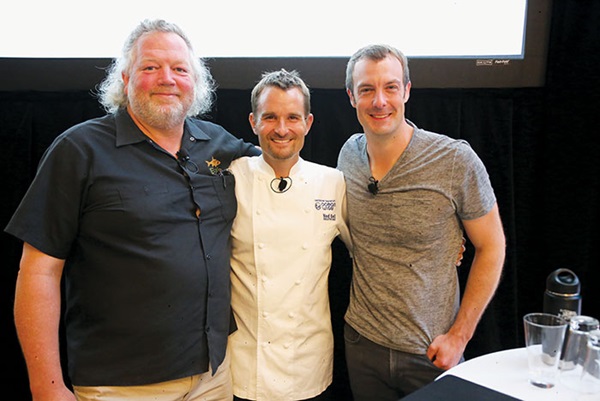 SeaWeb Seafood Summit speakers, (from left) chefs Tom Douglas, Ned Bell and Barton Seaver.
SeaWeb Seafood Summit speakers, (from left) chefs Tom Douglas, Ned Bell and Barton Seaver. Photo: Azzura Photography
As a chef, author and activist, Barton Seaver provided a passionate presentation as the final speaker of the SeaWeb Seafood Summit.
Sustainability, he said, was not an outcome in and of itself, but a tool to achieve the goal of thriving, healthy communities, including fisheries.
While many people viewed fisheries as “something we set out from a safe dock to find”, he said it was better to stand on that same dock and turn around to see the infrastructure and the heritage, the weaknesses and opportunities of the adjacent towns.
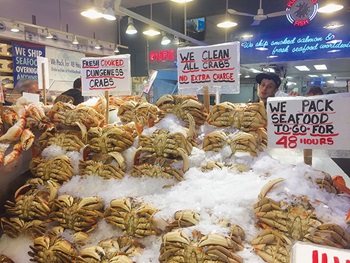 Pike Place Market, Seattle
Pike Place Market, Seattle “A fishery is the sum of the aspirations and labours of the community, and when we understand a fishery to be that, that’s powerful,” he said. “All of a sudden we have assigned the civic, social and moral value that we have long assigned to agrarian heroes, and we begin to hang that same halo over the head of our handsome fishers.”
He outlined the moral values of fisheries as including the promotion of good health, and acting on the “legacy impact” of dietary choices.
“When we talk about seafood, we have to start off by saying ‘EAT SEAFOOD’,” he said.
“The number one cause of death in [the US] is heart disease. Eating a diet rich in sustainable omega-3 fatty acid seafoods can reduce mortality incidence by 36 per cent. This is not a health issue; this is a moral issue.
“We literally have the cure in our hands and we’re not using it. We as a community are not espousing this as a fundamental principle to start conversations.
Eat seafood, save lives. It’s that simple.”
Barton Seaver said people who were not eating seafood were consuming other proteins such as beef, pork, chicken and lamb instead.
“And if you look at the legacy impacts of that, from land-use alterations, feed conversion ratios, freshwater use, antibiotic use and greenhouse gas emissions …seafood comes out on top, all the time.
“And when we scare people, inadvertently, away from the seafood counter we are driving them off into lesser environmental choices, and certainly to the lesser
health choice.”
Barton Seaver is leader of the Sustainable Seafood and Health Initiative at the Centre for Health and the Global Environment at the Harvard T.H. Chan School of Public Health.





